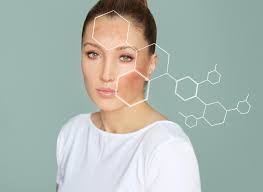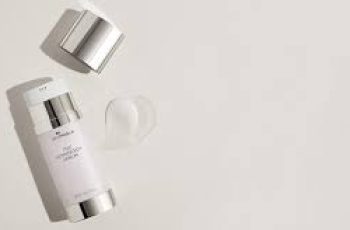
TRP Receptors and Skin Sensation: Exploring the Science Behind Stinging, Cooling, and Burning in Skincare
Have you ever applied a skincare product and immediately felt a tingling, stinging, or even burning sensation?
Or perhaps you’ve experienced a soothing, cooling effect from a cream or serum, especially after sun exposure or during hot weather?
These sensory responses are not random—they are mediated by a group of specialized proteins in the skin known as transient receptor potential (TRP) channels.
These molecular gatekeepers detect and translate physical and chemical stimuli from the environment into electrical signals that the brain interprets as sensations such as pain, warmth, cold, or irritation.
In this in-depth article, we will explore the fascinating biology of TRP receptors, how they are activated by various skincare ingredients, and why the same product can feel vastly different from one person to another.
We’ll also delve into common compounds that stimulate these receptors and discuss what this means for people with sensitive skin or specific skin conditions.
Understanding TRP Channels: Nature’s Sensory Gateways
TRP channels are a large family of ion channels that play crucial roles in sensory physiology.
These proteins are embedded in cell membranes and act as gatekeepers for ions such as calcium (Ca²⁺), sodium (Na⁺), and magnesium (Mg²⁺).
When a TRP channel is activated—whether by temperature changes, mechanical pressure, or chemical substances—it opens, allowing ions to flow into the cell.
This ion influx initiates signaling cascades that influence pain perception, inflammation, temperature regulation, and more.
The TRP Family in Skin
Although there are many subtypes of TRP channels, several have been identified as particularly important for skin physiology:
TRPV1 – Activated by heat (>43°C), capsaicin, and acidic pH (like from lactic acid). Known as the “vanilloid” receptor.
TRPV2 – Responds to even higher temperatures (>52°C) and may play a role in severe heat detection.
TRPV3 – Sensitive to warm temperatures (~33–39°C) and activated by camphor.
TRPV4 – Involved in sensing mild warmth and osmoregulation.
TRPM8 – Detects cool temperatures (<26°C) and is activated by menthol and mint oils.
TRPA1 – Activated by cold temperatures and pungent substances like cinnamon oil or mustard.
Each of these channels plays a distinct role in the perception of environmental stimuli, which is why different skincare ingredients elicit unique sensations.
How Skincare Ingredients Interact with TRP Channels
Capsaicin and Heat Sensation
Capsaicin, the spicy component of chili peppers, is a potent activator of TRPV1. When applied topically, capsaicin binds to TRPV1, causing the channel to open and flood the cell with calcium ions.
This results in depolarization of the nerve ending and transmission of a signal to the brain, which interprets it as heat or burning.
Interestingly, repeated exposure to capsaicin can desensitize these nerve endings, which is why it’s sometimes used in creams for pain relief.
Menthol and Cooling
In contrast, menthol—a compound found in peppermint oil—activates TRPM8, a receptor that senses cold.
When menthol binds to TRPM8, it tricks the brain into perceiving a cooling sensation, even if the skin temperature remains unchanged.
This effect explains why menthol-containing products are often used for their refreshing feel, especially in after-sun products or formulations for hot flashes.
Camphor and Warming
Camphor is a unique compound because it can activate multiple TRP channels, including TRPV3, which senses warmth.
As a result, camphor-containing products can cause a mild warming effect, making them popular in topical analgesics like balms for sore muscles.
Common Skincare Ingredients That Affect TRP Receptors
Numerous skincare ingredients interact with TRP channels, influencing how products feel on the skin and how effective or irritating they may be. Here’s a deeper look at some common examples:
Ingredient TRP Activation Sensation Produced Notes
Capsaicin TRPV1 Burning/warming Used in pain-relief formulations
Menthol TRPM8 Cooling Found in lip balms, toners, and after-sun products
Camphor TRPV3, TRPV1 Warming, slight tingling Used in Vicks and Tiger Balm
Lactic Acid TRPV1 Stinging, tingling Common in exfoliants and chemical peels
Azelaic Acid TRPV1 (likely) Tingling, mild burning Used for acne and rosacea
Peppermint Oil TRPM8, TRPV1 Cooling and sometimes tingling May be irritating for sensitive skin
Eucalyptus Oil TRPM8, TRPV1 Cooling and warming Often used in aromatherapy and chest rubs
Clove Oil TRPV1, TRPA1 Warming, tingling Contains eugenol
Cinnamon Oil TRPA1 Warming, tingling Can be irritating in high concentrations
Wintergreen Oil TRPV1 Mild irritation, warmth Contains methyl salicylate
Why Skincare Products Sting or Burn
The stinging or burning sensation some people experience when using certain skincare products is typically a result of TRPV1 activation.
Ingredients with low pH, like ascorbic acid (vitamin C), lactic acid, or glycolic acid, can activate TRPV1 due to the high proton concentration, triggering pain and heat pathways in the nervous system.
Factors that influence how a person experiences these sensations include:
Skin barrier integrity: Compromised skin allows deeper penetration of irritants.
Concentration of ingredients: Higher acid concentrations are more likely to sting.
Individual TRPV1 expression: Some individuals naturally have more active TRP receptors.
Combination of ingredients: Certain formulas may include multiple irritants or sensitizers.
People who report stinging from lactic acid are referred to in dermatology as “lactic acid stingers,” and not everyone experiences this sensation.
It’s an active area of research to determine why certain people are more sensitive than others.
Sunscreens and TRP Activation
Interestingly, even sunscreens—especially chemical formulations—can activate TRP receptors. Some commonly used chemical filters, such as:
Oxybenzone (Benzophenone-3)
Octocrylene
4-Methylbenzylidene Camphor (4-MBC) have been shown to activate TRPV1 in laboratory studies.
This activation could explain the stinging or discomfort that some users report when applying chemical sunscreens.
For those with sensitive skin, mineral-based sunscreens (using zinc oxide or titanium dioxide) are often recommended, as they are less likely to penetrate the skin or activate TRP receptors.
Retinoids and Skin Irritation
Retinoids—such as tretinoin, retinol, adapalene, and tazarotene—are known for their powerful effects on skin cell turnover but are also notorious for causing irritation, especially in early stages of use.
This irritation is thought to involve TRPV1 activation, which triggers the release of neuropeptides like substance P and CGRP (calcitonin gene-related peptide).
These compounds cause inflammation, itching, and burning, collectively known as retinoid dermatitis.
Once TRPV1 is sensitized by retinoids, even water or mild products may cause discomfort until the skin adapts or heals.
Environmental and Physiological Modulators of TRP Activity
Several external and internal factors can influence TRP receptor expression and sensitivity, including:
UV exposure: Increases TRPV1 expression and may heighten sensitivity.
Aging: Alters TRP channel function, possibly contributing to increased skin dryness and itch in older adults.
Skin diseases: Conditions like eczema and psoriasis compromise the skin barrier, making TRP receptors more accessible to irritants.
Personalized Skincare: The Role of TRP Understanding
Because TRP activity varies significantly among individuals, skincare cannot be one-size-fits-all.
Tools like the Baumann Skin Type Indicator (BSTI) help users understand their unique sensitivities and formulate routines that minimize discomfort while maximizing benefit.
For example, knowing whether your skin is likely to sting when exposed to acids or menthol can help you choose gentler formulations.
This personalization not only improves comfort but also enhances long-term skin health by avoiding chronic irritation.
Final Thoughts: A New Frontier in Dermatology
The discovery and study of TRP channels in the skin has opened up a new realm of dermatological science.
These receptors bridge the gap between chemistry and sensation, helping us understand why some skincare products feel refreshing while others may cause discomfort.
As research continues, we may see new skincare products that are deliberately designed to modulate TRP receptors to reduce irritation, enhance comfort, or deliver more targeted therapeutic benefits.
Whether you’re a skincare enthusiast, a dermatologist, or simply someone looking for answers about why your moisturizer sometimes stings—understanding TRP receptors offers a fascinating and empowering perspective.


